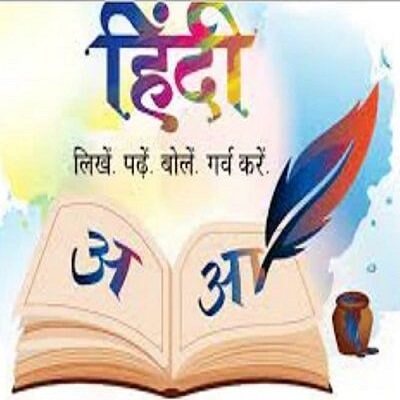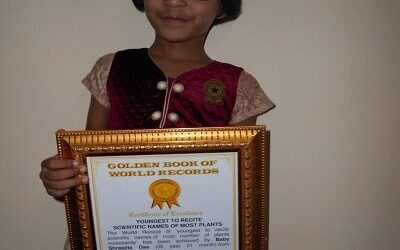Hindi day
National Hindi Day is celebrated every year on 14 September. On 14 September 1949, the Union Legislative Assembly adopted Hindi. Which was written in the Devanagari script as the official language of the Union. While the focus of World Hindi Day is to promote the language globally.
Hindi minority language in Fiji, Mauritius, Guyana, Suriname, Trinidad and Tobago, and United Arab Emirates has increased in the world Hindi is studied and taught in about 115 educational institutions of the world to know India better. Hindi is taught in 32 universities and educational institutions in America. Hindi is taught at Britain’s London University, Cambridge, and York University. 15 educational institutions in Germany have adopted the study of Hindi language and literature. Many organizations promote Hindi. Hindi studies started in China in 1942. In 1957, the work of translation of Hindi works into Chinese started. Hindi will not have to become a river but a sea.
Hindi has increased in technology, according to a study, the consumption of Hindi content has increased by about 94 percent. One in every five people uses the internet in Hindi. Can write in Hindi on Facebook, Twitter, and WhatsApp. For this, there are many software and smartphone applications like Google Hindi Input, Lipik. in. Hindi-English translation is also possible.
Hindi is one of the most widely spoken languages in the world after English and Mandarin. In terms of linguistic diversity, Hindi is the fourth most spoken language in the world, after English, Mandarin, and Spanish. Hindi is also a direct descendant of an early form of Vedic Sanskrit.
International Hindi University The result of the first World Hindi Conference can be seen today in the form of Mahatma Gandhi International Hindi University in Wardha. The university was established by the Government of India in 1996 by an act passed by the Parliament. Since Mahatma Gandhi was a strong supporter of Hindi and Indian languages. That’s why it is most meaningful to name this university after him. Due to Wardha being located in the center of India, this place is also suitable for this university. One of the major responsibilities of Mahatma Gandhi International Hindi University is also to establish Hindi as a world language.
With the establishment of the International University in Wardha, an unfulfilled aspiration of Bhartendu Harishchand, the father of modern Hindi, was also fulfilled. Bhartendu’s accumulated ambition was – ‘Would establish a pure Hindi University through my industry.’ Hindi is one of the most important languages in the world. The number of people who speak and understand it is huge in India and other countries of the world. Surely such events will be successful in establishing the Hindi language and Hindi speakers at an important place on the world stage.
Former Prime Minister Atal Bihari Vajpayee has given some words to the dream of India’s Hindi being world Hindi-
गूंजी हिन्दी विश्व में, स्वप्न हुआ साकार; राष्ट्र संघ के मंच से, हिन्दी का जयकार;
हिन्दी का जयकार, हिन्दी हिन्दी में बोला; देख स्वभाषा-प्रेम, विश्व अचरज से डोला;
कह कैदी कविराय, मेम की माया टूटी; भारत माता धन्य, स्नेह की सरिता फूटी!
Hindi is one of the five most spoken languages in the world.
Hindi is spoken in many countries including Pakistan, Nepal, Bangladesh, America, Britain, Germany, New Zealand, United Arab Emirates, Uganda, Guyana, Suriname, Trinidad, Mauritius, and South Africa.
According to the calculation of the World Economic Forum, Hindi is one of the ten most powerful languages in the world.
Hindi has been given the status of an official language in Fiji. Hindi is taught in hundreds of universities of the world and Hindi is spoken by crores of people all over the world. Hindi is the most spoken language in India and has the status of an official language.
Significance of Hindi Day: Hindi Day is celebrated to remember that day. The day Hindi became the official language of our country. This day reminds us of our true identity every year and unites the people of the country. Wherever we go, our language, culture, and values must remain with us.
Why is Hindi, not our national language? The Constitution has never declared Hindi as the national language, rather, in 1950, it recognized Hindi in Devanagari script as the official language of the Union along with English under Article 343. For the uninitiated, Part XVII of the Constitution deals with official language.
Hindi is the official language of India, that is, the working language of India. There is no national language of India in the Indian constitution. The government has given place to 22 languages as official languages.
Dialects in India: These include, apart from Sanskrit, the following 21 modern Indian languages: Assamese, Bengali, Bodo, Dogri, Gujarati, Hindi, Kashmiri, Kannada, Konkani, Maithili, Malayalam, Manipuri, Marathi, Nepali, Oriya, Punjabi, Tamil, Telugu, Santali, Sindhi, and Urdu.
Invention of Language: Language came and evolved for humans to survive and develop. It was first invented by Homo sapiens, but researchers don’t know exactly when. The language originated between 50,000 and 100,000 years ago.
Where pure Hindi is spoken: The purest Hindi language is spoken in Uttar Pradesh. Kashi, Allahabad, and Awadh have been the focal point of the Hindi language from the beginning. The results suggest that language first evolved about 50,000–150,000 years ago, which is around the time that modern Homo sapiens evolved.
Experts of Hindi language and literature accept the origin of Hindi from ‘Avahatta’, the last stage of Apabhramsa. Chandradhar Sharma ‘Guleri’ named this Avahat as ‘Old Hindi’.
From the point of view of literature, the poems which are found. The use of the old Apabhramsa language and colloquial native language continued to increase. Vidyapati has called this language ‘Desi Bhasha’, but it is not easy to decide when and in which country the use of the word ‘Hindi’ started for this language.
Medieval Hindi: Hindi flourished in the Bhakti movement in the medieval period. Devotee poets from all over the country took the support of Hindi to make their speeches accessible to the masses.
Modern Period: Fort William College, established by the British in Calcutta in 1800, has an important contribution to the development of the Hindi language. For the first time in the Hindustani department of the college, good translations were done in Hindi, due to which Hindi prose began to take form.
Hindi at the time of freedom struggle: Hindi and Hindi journalism played an important role in India’s freedom struggle. Many national leaders including Mahatma Gandhi started seeing Hindi as the national language.
Hindi after independence: Hindi was declared the official language of India when India became independent.
Hindi in the Internet era: the Hindi language is not available on the Internet as much as it is demanded. But the speed with which the internet has developed in India, in the same way, Hindi is also dominating the internet. Registering its presence from newspapers to Hindi blogs. Thanks also go to Google which provided a place to search in Hindi. Not only this but realizing the importance of Hindi, Wikipedia also started providing software translation of many contents in Hindi, which made information on any subject accessible to Hindi speakers. Nowadays Hindi has also emerged as an important popular language of the Internet. I believe that when people will do more of their thoughts and writings in Hindi language on the Internet, then that day is not far, all the material will be available on the Internet in Hindi as well.
What is the meaning of national language: What is the national language? The literal meaning of national language is the language used in the entire nation, that is, the language of the common people (people’s language). The language which is the medium of exchange of thoughts among people in the entire nation is called the national language. The national language is the product of the need for national unity and international communication.
World Hindi Day is celebrated every year on 10 January. Its purpose is to create awareness for the promotion of Hindi in the world and to present Hindi as an international language. Embassies of India abroad especially celebrate this day. Lectures are organized in Hindi on various subjects in all government offices. World Hindi Conferences were started to develop and promote Hindi in the world and the first World Hindi Conference was held in Nagpur on January 10, 1975. Since then this day is celebrated as ‘World Hindi Day’.
World Hindi Secretariat is located in Moka village of Mauritius. The Secretariat is functional since 11 February 2008. It was decided to establish the World Hindi Secretariat to promote Hindi as an international language and provide institutional arrangements for organizing World Hindi conferences. It was conceptualized during the First World Hindi Conference held in Nagpur in 1975 when the then Prime Minister of Mauritius Sir Seevsagar Ramgoolam proposed to set up a World Hindi Secretariat in Mauritius.
To give shape to this concept, an MoU was signed between the Governments of India and Mauritius on 20 August 1999. The World Hindi Secretariat Act was passed by the Cabinet of Mauritius on 12 November 2002 and a bilateral agreement was signed on 21 November 2001 between the Government of India and the Government of Mauritius. The World Hindi Secretariat formally started functioning on 11 February 2008. The Governing Council of the World Hindi Secretariat has 5 members each from both India and Mauritius.
What is national language: The literal meaning of national language is the language used in the whole nation, that is, the language of the common people (people’s language). The language which is the medium of exchange of thoughts among the people in the entire nation is called the national language. The national language is the product of the need for national unity and international communication. By the way, all languages are national languages, but when the people of the nation rise above the local and immediate interests and prejudices and choose one of the many languages of their nation and consider it as an essential element of national identity, then that is the national language.
The national language is needed during the freedom struggle. Hindi fulfilled this need in the context of India. This is the reason that Hindi became the national language during the freedom struggle.
The word national language is not constitutional, rather it is an experimental, practical, and popularly recognized word. The national language works to connect the country at the social, and cultural level, that is, the primary condition of the national language is to establish emotional unity among different communities in the country. The area of use of the national language is wide and countrywide. The national language is the link language of the whole country. It has a wide mass base. The national language can always be its language because the public has an emotional attachment to it. The form of national language is flexible and it can be molded in any form according to the people.
Contribution of the British: National language is the link language of the whole country. Hindi has been the language of people-to-people contact throughout the country for a long time. It was not only of North India, but the Acharyas of South India, Vallabhacharya, Ramanuja, Ramanand, etc. also propagated their views through this language. Devotee-saint poets of non-Hindi speaking state (such as Shankardev of Assam, Dnyaneshwar, and Namdev of Maharashtra, Narsi Mehta of Gujarat, Chaitanya of Bengal, etc.) had made this language the medium of their religion and literature.
This was the reason that to establish a dialogue between the people and the government, problems arose through Persian or English, so the company government made arrangements to teach Hindi to the officers by opening an Indian department in Fort William College. Hindi-educated officers from here praised Hindi with a free voice by giving its direct benefits in different fields.
C. T. Metcalfe wrote to his education teacher John Gilchrist in 1806 AD – ‘In whatever part of India I had to work. From Calcutta to Lahore, from the mountains of Kumaon to the river Narmada, I have seen the common practice of the language you have taught me. I can dare to travel from Kanyakumari to Kashmir or from Java to the Indus with the confidence that I will find people everywhere who speak Hindustani.’
Thomas Roebuck wrote in 1807 AD – ‘Just as a person going to England should learn English instead of Latin Saxon or French, similarly a person coming to India should learn Hindustani instead of Arabic-Persian or Sanskrit.
William Carey wrote in 1816 AD- ‘Hindi is not the language of any one state but it is the language spoken everywhere in the country.’
H. T. Colebrooke wrote – ‘The language which is used by the people of every province of India, which is the language of ordinary speaking of both educated and illiterate. Which is understood by a few people in every village, its real name is Hindi.
George Grierson has called Hindi ‘the great language of common speech’. It is clear from the views of these scholars that the British adopted Hindi due to its practical utility, nationwide spread, and flexibility in use. At that time Hindi and Urdu were considered as one language. By using Hindi, the British drew the attention of national leaders and litterateurs towards the great possibilities of Hindi.
Almost all the institutions of religion/social reform realized the importance of Hindi and advocated Hindi. Raja Rammohan Roy, the founder of Brahmo Samaj (1828 AD), said, Hindi is essential for the unity of this entire country. Brahmo Samaji Keshav Chandra Sen wrote an article in 1875 AD, ‘How to be Indian Unity,’ in which he wrote – The solution is to practice the same language all over India. Among all the languages currently prevalent in India, the Hindi language is prevalent almost everywhere. If this Hindi becomes the only language of India, then this work can be completed easily and soon. Another Brahmo Samaji Naveen Chandra Rai made a commendable contribution to the development of Hindi in Punjab.
Swami Dayanand Saraswati, the founder of Arya Samaj (1875 AD) was Gujarati-speaking and was well-versed in Gujarati and Sanskrit. He had only a working knowledge of Hindi, but to make his point reach more and more people and strengthen the unity of the country, he wrote all his religious literature in Hindi only. He said that the whole of India can be united in one thread through Hindi. He considered this ‘Aryan language’ as the main basis of all-atman national progress. He gave a national form to the use of Hindi. He used to say, ‘My eyes long to see the day when all Indians from Kashmir to Kanyakumari will understand and speak one language.
Arvind Ghosh, the pioneer of Arvind philosophy, advised that ‘people should adopt Hindi as a common language while protecting their mother tongue’.
Annie Besant, director of the Theosophical Society (1875 AD), had said, “Among the many vernacular languages spoken in different parts of India, there is one language which has one great advantage over all others, namely, that it has the most publicity. That language is Hindi. A man who knows Hindi can travel all over India and find Hindi speakers everywhere. The teaching of Hindi should be made compulsory in all schools in India.”
In addition to the above-mentioned religious/social organizations, Prarthana Samaj, Sanatan Dharma Sabha, Ramakrishna Mission, etc. contributed to the promotion of Hindi.
From this, it seems that the thinking of religious/social reformers had been formed that Hindi is necessary to establish a dialogue at the national level. They knew that Hindi is the language of the majority, and people of one province can exchange ideas with the people of another province only in this language. These religious/social reformers did the work of increasing Hindi as the future national language.
Contribution of leaders: Congress was established in 1885 AD. As the national movement of Congress gained momentum, the urge for nationalism, the national flag, and the national language kept on increasing.
In 1917, Lokmanya Bal Gangadhar Tilak said, “However, I am one of those people who want and think that Hindi can be the national language of India.” Tilak urged the Indians to learn Hindi.
Mahatma Gandhi considered the national language necessary for the nation. He used to say, “A nation without a national language is dumb.” Gandhiji considered the question of Hindi as a question of Swaraj – “The question of Hindi is a question of Swaraj.” He seriously considered the language problem by keeping Hindi as the national language. In 1917 AD, while giving a speech from the post of Chairman in the session of the Gujarat Education Council held in Broach, Gandhiji said, there should be 5 characteristics or conditions for the national language-
That language should be simple for the officials.
Many people of India must speak that language. India should have its religious, economic, and political behavior through that language. That language should be easy for the nation. While considering that language, no momentary or temporary situation should be emphasized. “In the year 1918 AD, while giving a speech from the post of Chairman in the Indore session of Hindi Sahitya Sammelan, Gandhiji supported the national language Hindi, “I think that Hindi can and should be the national language of India.” In the same session, a resolution was passed that every year 6 South Indian youths should be sent to Prayag to learn Hindi and 6 North Indian youths should be sent to South India to learn South languages and spread Hindi. After the Indore conference, he made the work of Hindi a national vow. As the first Hindi preacher in the South, Gandhiji sent his youngest son Devdas Gandhi to Chennai in the South. With the inspiration of Gandhiji, national language propaganda meetings were established in Madras (1927 AD) and Wardha (1936 AD).
In the year 1925 AD, in the Kanpur session of the Congress, with the inspiration of Gandhiji, a resolution was passed that ‘the work of the Congress, of the General Committee of the Congress and the Working Committee shall generally be conducted in Hindi’. The Hindi movement got a big boost from this proposal.
Gandhiji wrote in the year 1927 AD: “Actually it is the English-speaking leaders who do not allow our work to progress quickly in the general public. They refuse to learn Hindi, whereas Hindi can be learned within three months even in the Dravidian region.
In the year 1927, C. Rajagopalachari advised the people of the South to learn Hindi and said, “Hindi is not only the national language of India, it will also be the official language of democratic India.”
In the Nehru Report presented in the year 1928 AD, it was said in the language-related recommendation, “Hindustani written in Devanagari or Farsi will be the national language of India, but for some time the use of English will continue.” Except that ‘Devanagari or Persian’ was replaced by ‘Devanagari’ and ‘Hindustani’ by ‘Hindi’, eventually, this opinion was adopted in the constitution of independent India.
In the year 1929, Subhash Chandra Bose said, “The amount of help that will be given by this Hindi propaganda in removing provincial jealousy and hatred cannot be given by anything else. Make full progress in your provincial languages, no one wants to hinder it, nor can we tolerate anyone’s obstacle. But Hindi or Hindustani has got the post of public language of all the provinces.”
In the year 1931, Gandhiji wrote, “If Swarajya is for the English-educated Indians and only for them, then English must be the language of communication. The contact language can be Hindi only.” Gandhiji was in favor of talking about the people in the language of the people.
In the year 1936, Gandhiji said, “If India wants to move forward, then whether one believes it or not, only Hindi can become the national language because no other language can get the place which Hindi has got.”
In the year 1937, Congress ministries were formed in some states of the country. A resolution was taken to encourage the study of Hindi in these states.
As the freedom struggle intensified, the movement to make Hindi the national language gained momentum. By the fourth decade of the 20th century, Hindi had gained consensus as the national language. The period from 1942 to 1945 was such when the wave of independence was the most intense in the country, then the number of compositions imbued with the national language was written in Hindi, probably never in any other language so widely. Britishers left India when nationalism prevailed with national language propaganda
Fourth widely spoken language in the world: Hindi language is the fourth widely spoken language in the world. Most of the population in India is Hindi-speaking. Other countries where Hindi is widely spoken are Pakistan, Nepal, Mauritius, Fiji, Guyana, Suriname, etc. People all over the world love Hindi songs and movies very much. Which clearly defines the love towards the Hindi language.
Hindi not getting priority: Unfortunately, even though the Hindi language is the fourth most widely spoken language, people do not give it any importance in its native country itself. From school to college to offices, English is given priority everywhere and Hindi is left behind from English. In today’s time, the importance of learning the English language both in written and oral form is being emphasized by parents, teachers, and everyone as it helps a lot in getting employment.
It is very sad to see that even jobs and courses require people to be smart as the hiring authorities also select them based on their relative knowledge of English. Many people miss out on job opportunities just because they cannot speak English fluently even though they are fully aware of the job.
At present, there is some progress towards Hindi. Some educational institutions have adopted Hindi. In the 75th year of independence, the respected Prime Minister is expected to declare Hindi as the national language on September 14, 2022.
Jai Hindi Jai India




